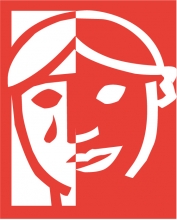Occupational Therapy Pain Curriculum
For more information:![]() occupational_therapy.pdf
occupational_therapy.pdf
The Occupational Therapy Program does its best to follow the IASP Curriculum Outline on Pain for Occupational Therapy. The pain curriculum is scaffolded across the Premasters year and the first year of the master’s program. Within the Fall Premaster’s semester (OCC1-545), students are exposed to the concept of acute pain in relation to musculoskeletal conditions including: fractures, ligament injuries, tendon injuries, peripheral nerve injuries, burn injuries, etc… They also start to learn about the Fear Avoidance Model and the Biopsychosocial Model of Pain. Within this course they are also introduced to psychosocial factors, such as catastrophizing, kinesiophobia, fear avoidance, depression, and PTSD. They learn about self-report assessment tools and those for psychosocial factors, in addition to a wide range of interventions, such as patient education, desensitization, mirror therapy, graded motor imagery, edema reduction techniques to reduce acute pain, sensory re-education, somatosensory approach, adaptive approach, activity modification, use of assistive technology, relaxation therapy, activity pacing, behavioral activation, cognitive restructuring, and biofeedback. They are also introduced to chronic pain and psychosocial adaptation. Within the Winter Premaster’s semester, students learn about conditions, such as rheumatological diseases, amputations, pressure sores, and joint arthroplasties in OCC1-549. They also build upon their knowledge of interventions to impact pain, such as adaptive aids, joint protection education, orthoses, and architectural modifications. Alongside this course, students are learning about chronic conditions in OCC1-548. Here they have classes on chronic pain and fibromyalgia (along with other conditions that may feature pain, such as cancer). They revisit assessment tools from 545 and add tools, such as Survey of Pain Attitudes, Pain Beliefs and Perceptions Inventory, Pain SelfEfficacy Questionnaire, Daily activity diary, Oswestry Low Back Pain Disability Questionnaire, Pain Disability Index, etc… Within this course they continue to learn about the many facets of Pain Management including postural hygiene, body mechanics, pain modalities, relaxation, sleep hygiene, graded activity, etc… They also learn about programs, such as PGAP and Lifestyle Redesign. Within the Fall M1 semester, students take OCC1-620 (Work and Ergonomics), where they build on pain knowledge within a work disability context. They learn about the role of pain in functional assessment and how to design effective return to work interventions, and ergonomic workplaces for those with pain conditions. The concepts of stigma and disclosure, in addition to the broader role of the system in disability are also covered. Psychosocial assessment tools and intervention relevant to people living with pain are also introduced at different times in the curriculum. For example, they learn about Cognitive Behavioral Therapy, Acceptance and Commitment Therapy, narrative reasoning, and Motivational Interviewing. These concepts are then pulled into relevant courses in relation to intervening with someone living with pain. A variety of pedagogical approaches are used to scaffold learning across the curriculum. These include lectures, Hands-On Workshops where they get to try out assessment tools and interventions, and Professional Reasoning Seminars where they work through cases. Each course featuring this content uses readings, videos and client visits to the classroom to delve into the lived-experience of pain. Evaluation of this content takes the form of exams, case reports, student-led seminars, and OSCEs.
